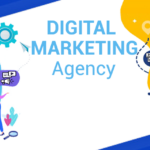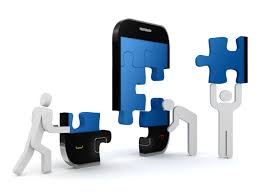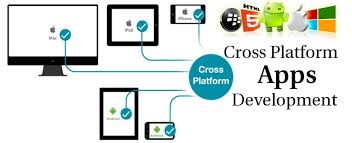Top 7 Steps to Create a Successful Mobile Application for your Business
Since mobile users are increasing day by day, the use of mobile applications is also increasing rapidly.
This clearly shows that the “web is not enough” you need to deliver your services to your target audience through mobile applications also. So, In this blog, I am going to share the top 7 steps that you should follow while creating a successful mobile application for your business.
Keep reading till the end, you are going to get a lot of knowledge in it.
Mobile app development is not a five-finger exercise. One needs to delve into different aspects of understanding all the key objectives for the development of the mobile application. The two core questions asked by potential clients are regarding the process and the process of creating a mobile application.
It is important for you to know that mobile app development is no joke. Creating a basic app in a few hours is easier with platforms like PhoneGap. So, how will you make ends meet? Will it serve your needs and wants?
It is all about creating the right plan, making your application popular and financially successful. And for that, you need to understand the base for the development of your mobile application.
Discovering Stage Of Mobile App Development
People often directly head towards mobile app development without creating a proper strategy. There are certain hurdles and challenges which they are not aware of. And this could even lead to missing the important factors that may become the successful venture of the mobile app.
Lack of planning and arising complications may cost loads of time and resources. Before you delve to create a mobile app, measure and curate a strategy beforehand.
It is the discovery stage that will help in the pre-development research to define the app’s goals, the problems to resolve and meeting user expectations.
The focus of mobile app development is to look at the process like a project. And how this taken project could become a successful venture.
Ifs and buts are involved before commencement on the development process. One needs to go through the same and curate the proper strategy. Finally, the formulation of realistic time and cost estimate for completing the project.
Once the discovering stage is set aloof, now it is time for you to delve into the 7 core steps that will help in the app development of your mobile application.
Read More:- Mobile App Life Cycle Management
Read More:- How to Build The Best App?
1. Understand And Define Your Goals

The first step to the commencement of any project is defining its set of goals. There are business needs and aims, user goals, engagement goals and so much more. There are certain questions that you need to delve into, just like –
- What is the problem that you need to solve for your target audience?
- Is it a real problem?
- What is the best solution for resolving the issue?
You must dig yourself in completely to understand the root of the problem. This will help you to evaluate how a mobile app can preferably solve it. You need to know that there is so much time and money that is needed for the development of an app. So need to confront your idea’s validity and viability.
Once you have the answers to your questions, you can head forward to the market player and decide upon providing a better alternative than what they offer. Whether you are choosing to develop an outstanding user interface or the less noble approach of cloning the lead product and undercutting price, you need to have a proper strategy.
2. Learning From Your Competitors

Business leaders standing on paper planes and looking through binoculars. Planning, challenge, spyglass. Leadership concept. Vector illustration for topics like business, development, success
Now, that you have an idea for the app and also a proper solution, it is time for making it different. Before you jot down all the requirements and started working on designs and user flows, you should know your competitors well.
Review every company that offers some sort of service or functionality. Even if they do not offer the same, you will get an idea of the value proposition as your future app. Review their offers. experience and flow of the task. The aim focus of competitive research is on how the company is doing and its related peripherals.
Demographics play an important role in the development of a successful mobile application. There are many factors involved during the process. This includes understanding the target audience, age, gender, needs, expectations and so on. Also, there are technical factors involved like hardware performance, battery life and required peripherals.
3. Conceptualizing UI/UX Design

The most outstanding application will fail to impress the market if it lacks usability and design. Users will be intrigued by the application when it intuitive enough. There will be curious about knowing more, what actions to perform and other specifications. The research will be conducted through UX.
What is UX Design?
It is the process where designers create impeccable products serving meaningful and relatable experiences to its users. The design showcases the process of gaining and integrating the product. The process includes branding, design, usability, and function. Being an ongoing process, with every update, users will be able to understand the enhancement of the application.
Let’s delve into some of the UX design processes –
Step 1: Architecture
- Information Architecture is all about understanding how the content should be formulated for maximizing accessibility and ease of use. The venture will be such that it will make the users perform the apt action.
- During this process, you will jot down the features and overall functionality of the application. Also, you will get to decide on how to organize and put in the information.
- The IA process commences by writing down the features and curating a rough sketch
- The IA process commences with jotting down the required features needed for the development of an application. It is all about creating a rough sketch to understanding the development process and the procedure involved in building wireframes.
Step 2: Wireframing
- Wireframing is the process where designers will conduct the framework in the form of a sketch to create an outlook of the mobile app. It will provide you with an idea about the look and feel of the application.
- It helps in creating the sketch that becomes easier than rewriting code. Good wireframes are important for helping you to launch your application effectively.
Step 3: Clickable prototype
- Now, you do have the sketch and features, you have to head forward to the product designer’s toolbox. InVision is easier to use, it is all about uploading the screens to the platform and linking them all together.
- There are different platforms that you can download for testing your prototype. Once such that you can try is by downloading InVision.
- Your app is not functional but is it good to go through the overall experience. You will be able to make changes to the wireframes and test the process again.
User Interface (UI) Design
Do not get confused with UI and UX designs. They have different functionality. UX is about meeting customer’s satisfaction, on the other hand, UI defines how your application looks and feels visually.
Step 1: Creating Style Guides
Style guides create the block of your app’s interface. It keeps the collection of elements, fonts, colors, and icons. You can say it the mini Design System. It also helps the developers to code and implements the app’s interface.
Step 2: Formulating and developing Rendered Design
It is about taking in the style guide and implementing the same into your wireframes. It is important to stick to your style guide and create the apps’ identity changes. After rendering all your screens, head to the clickable prototype and test it out again.
Read More:- Designing Mobile UI
Read More:- Changing Scenario of Mobile Retail Apps
4. Making Technical Specifications

mini people with gear machinery vector illustration design
The next phase is from design to development. You need to have constant communication between designers and developers since the commencement of the project. To follow a smooth collaboration, here is what you can do.
Step 1: Design files
Keep all the sketches and files organized. Name each of the functionality that will have a proper meaning to it.
Group layers appropriately.
Use the right objects for designing and development. Entitle the same with color codes or segregate into sections for better understanding.
Step 2: Share key user goals
Share the goals of your project to allow developers to put in user’s shoes and translating those screens into software logic. Jot down your aim and share it with the developers for an enhanced coding structure.
Step 3: Sharing your prototype with the developer
Your prototype will give a clear picture to the developers of what they are supposed to build.
Developers will be understanding the flow of information and features during the development of the application. This will further help in the right implementation of features like animations, transitions and everything associated with each screen.
Step 4: Share design specifications
Basic knowledge about HTML and CSS will help in structuring your app design that will make easier coding for developers. Developers will also include the key elements of designs like opacity, colors, fonts, height and width, alignment, spacing, etc.
5. Creating A Beta Version
Now the main factor is about creating the beta version of your application. It is about putting the idea into action. There are tools like Axure, Irise or Proto.io where you will be able to create a working prototype without writing a single line of code.
With the use of such platforms, you can put up your prototype to gain potential users and garner their feedback. This will further help you conduct enhancements to your application before its launch.
6. Launching version 1.0
Once all the process is done and dusted, your application is ready for launch. The new version of your project is ready after rigorous testing. Delve into how your application will be distributed and open sales for your business.
7. Marketing your app

Building and launching your application is half the application. Getting the right key for the marketing structure will help in building the brand.
Use the right knowledge and techniques for app store marketing. Implement the right source of strategies and create branding collaterals for your target audience to be more enthused to your application.
Read More:- The future of SEO
Read More:- Social Media Marketing Tools
Final Words –
It is about implementing the right structures and methodologies for the development of the best mobile application. The designing and development of the application should be in such a way that it should transform your business into a brand name.








